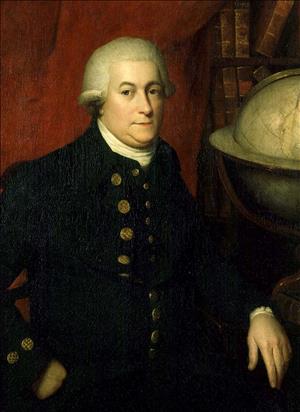At midnight on May 30, 1792, British explorer George Vancouver (1758-1798), sailing on the Discovery, drops anchor at Elliott Point, the site of present-day Mukilteo. The following morning crewmembers from the Discovery disembark for exploration.
A Place of Roses
Captain George Vancouver’s visit to Puget Sound from April 29 to June 12, 1792, is well documented through his own charts and journals. Yet changes in magnetic calculations made the actual anchorage locations difficult to pinpoint. Author and scholar Robert B. Whitebrook undertook the task of working with U.S. Coast and Geodetic Surveys and experts to calculate and record the crew’s landings. He published his findings in a 1953 issue of the Pacific Northwest Quarterly. He cites 18 anchorages, with the one at Mukilteo is listed as number seven.
On May 30, 1792 the Discovery sailed up Admiralty Inlet and just before midnight, dropped anchor off Elliot Point, north of the present site of Mukilteo. The Discovery's sister ship, the Chatham, had chosen to anchor closer to what is now Everett and for a time the neither of the two vessels knew the other's location. Vancouver ordered a swivel to be fired and the Chatham responded.
Botanizing on Pt. Elliott
From the Point Elliott anchorage, Vancouver could easily view nearby Gedney Island. The next day Vancouver and botanist Archibald Menzies (1754-1842) from the Discovery and Lt. Broughton, commander of the Chatham, went ashore to explore. Broughton called the place “Rose Point” for the many roses found on the site. These were wild bush roses, specifically Rosa nutkana, the Nootka rose. A few descendants of the plant can still be found along the shoreline. Menzies listed other aquatic plants found in the marsh near the beach, close to the present Mukilteo light house.
That afternoon the Discovery headed northwest and, finding little wind, anchored between Camano Head and Gedney Island. On June 1, 1792, both vessels headed toward Port Susan.

